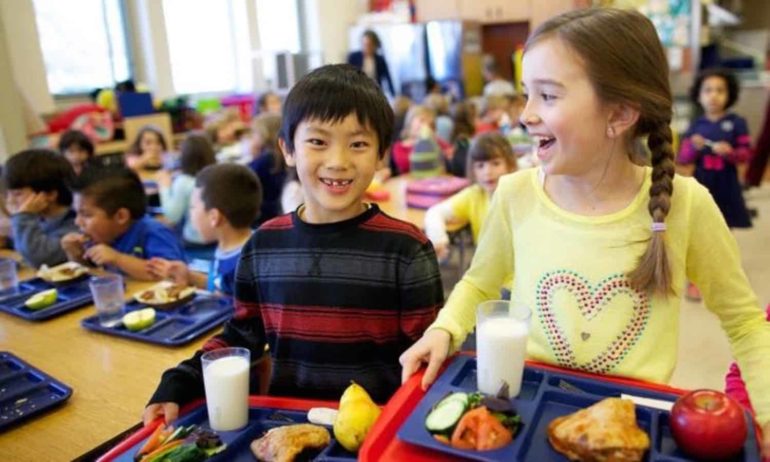Antibiotic use in farm animals is one of the leading culprits of a growing threat to global health: “superbugs,” or antibiotic-resistant bacteria. According the Centers for Disease Control, each year two million people in the United States are infected with superbugs, and 23,000 of them die as a result. About 70 percent of all antibiotics sold in the U.S. go toward food animal production, much of that for “non-therapeutic” use (to make animals grow faster or to protect them against unsanitary conditions). Those antibiotics enter our ground and water, and promote antibiotic resistance.
School food service directors across the country have voiced concern about antibiotics in meat, especially chicken—the number one protein served in school meals. Many school districts have been working on their own to reduce the amount of antibiotics in the meat they serve students, and some have been able to purchase small amounts of chicken raised without antibiotics.
For example, each year at Boulder Valley (CO) School District, where I serve as director of nutrition services, we purchase close to 40,000 pounds of chicken raised without antibiotics. We’ve been working toward this for six years and are lucky to live in a region where there is an adequate supply. For most districts, however, purchasing even a fraction of their chicken without antibiotics is impractical, bordering on impossible. There simply isn’t enough “no antibiotics ever” chicken to meet even the existing demand, and most school food budgets can’t accommodate the extra expense.
On May 7, 2015, School Food FOCUS, the Pew Charitable Trusts, and the USDA presented a solution: the Certified Responsible Antibiotic Use (CRAU) Standard for schools, hospitals, and other institutions. The CRAU Standard prohibits antibiotics used to treat humans from non-therapeutic use in chicken. That means that producers of chicken can’t use human antibiotics to speed up weight gain in chickens or to prevent illness. The standard does allow the use of antibiotics to treat sick birds, but only with veterinary supervision.
I can’t emphasize enough how important the CRAU Standard is, not just for school food, but for human health everywhere. Considering the amount of chicken schools across the country consume, broad use of the CRAU Standard could create a drastic shift in how chicken is produced in our nation. Wide-scale adoption of the standard would significantly decrease the amount of antibiotics used in chicken production and could slow the growth of superbugs. A key factor for schools, however, will be cost: currently, a large proportion of school food chicken is accessed through U.S. Department of Agriculture foods allocation, and not actually purchased.
Another factor will be volume, and determining how much CRAU-certified chicken can be produced to meet demand. In order for chicken producers to qualify for the certification, they must undergo a third-party audit from the USDA. The audit, which includes an inspection of production facilities, ensures that producers are implementing the practices necessary to qualify for the CRAU label. One major producer of chicken has undergone an audit at one of their production facilities, which is now certified to produce CRAU-labeled products, and another small producer has committed to an audit later this year. Broad adoption of the standard would keep supply high and prices reasonable.
School food safety shouldn’t just be about protecting the health of the children who are eating school food; it should also mean protecting the health of communities that are affected by the way food is produced. What we feed our children in school matters, and this level of transparency helps every school food service director feel good about the chicken we put on our students’ plates.















